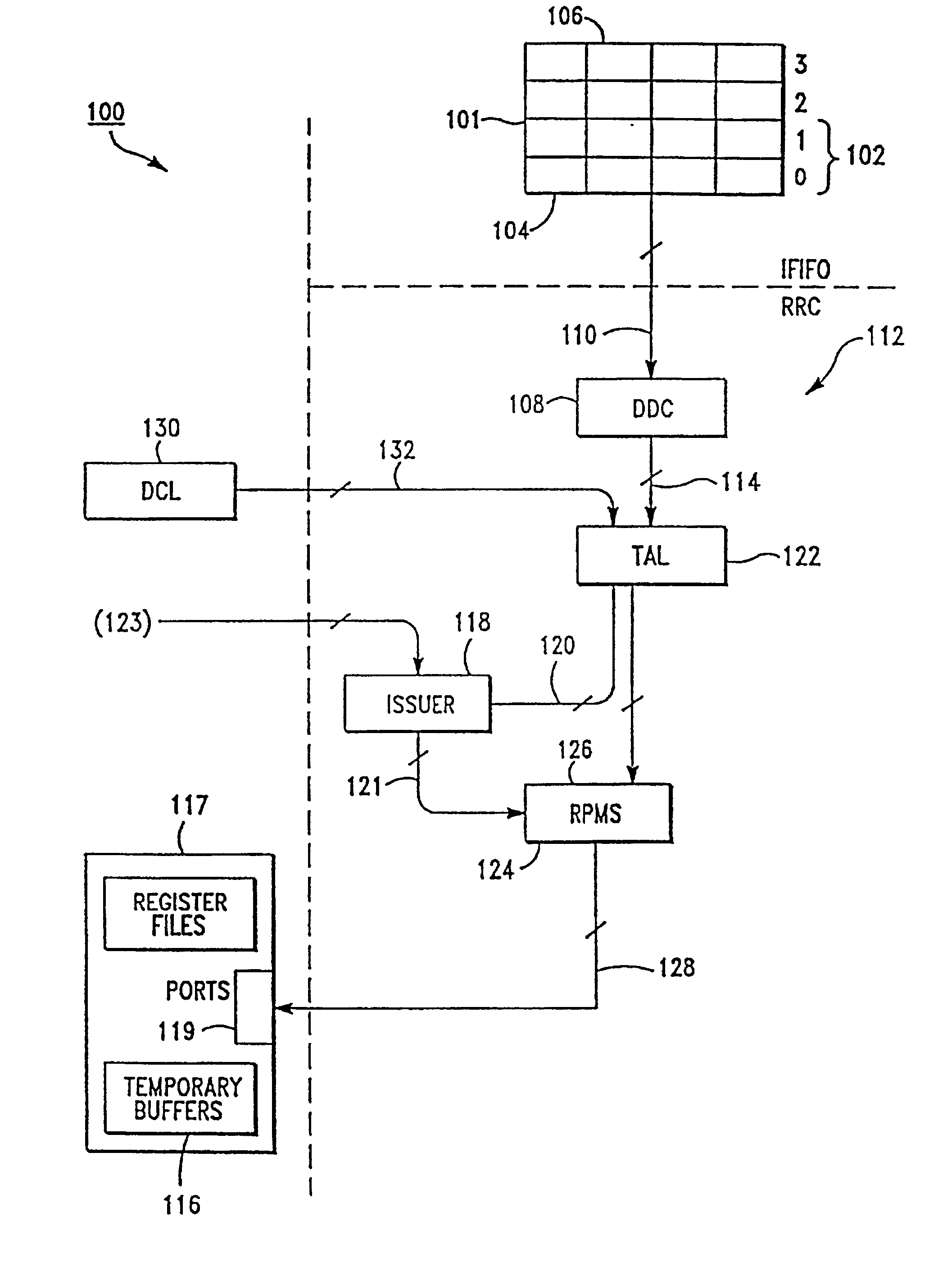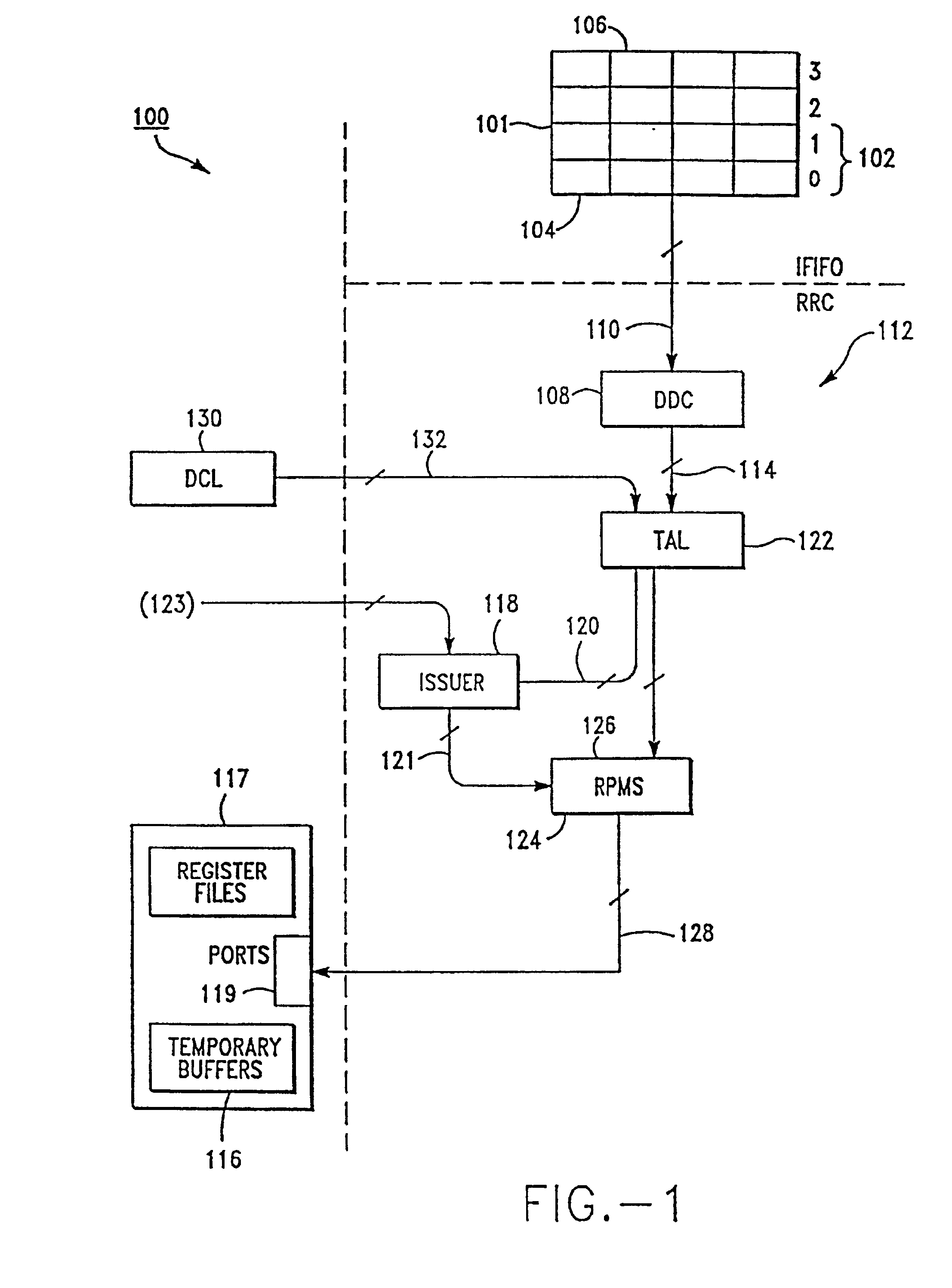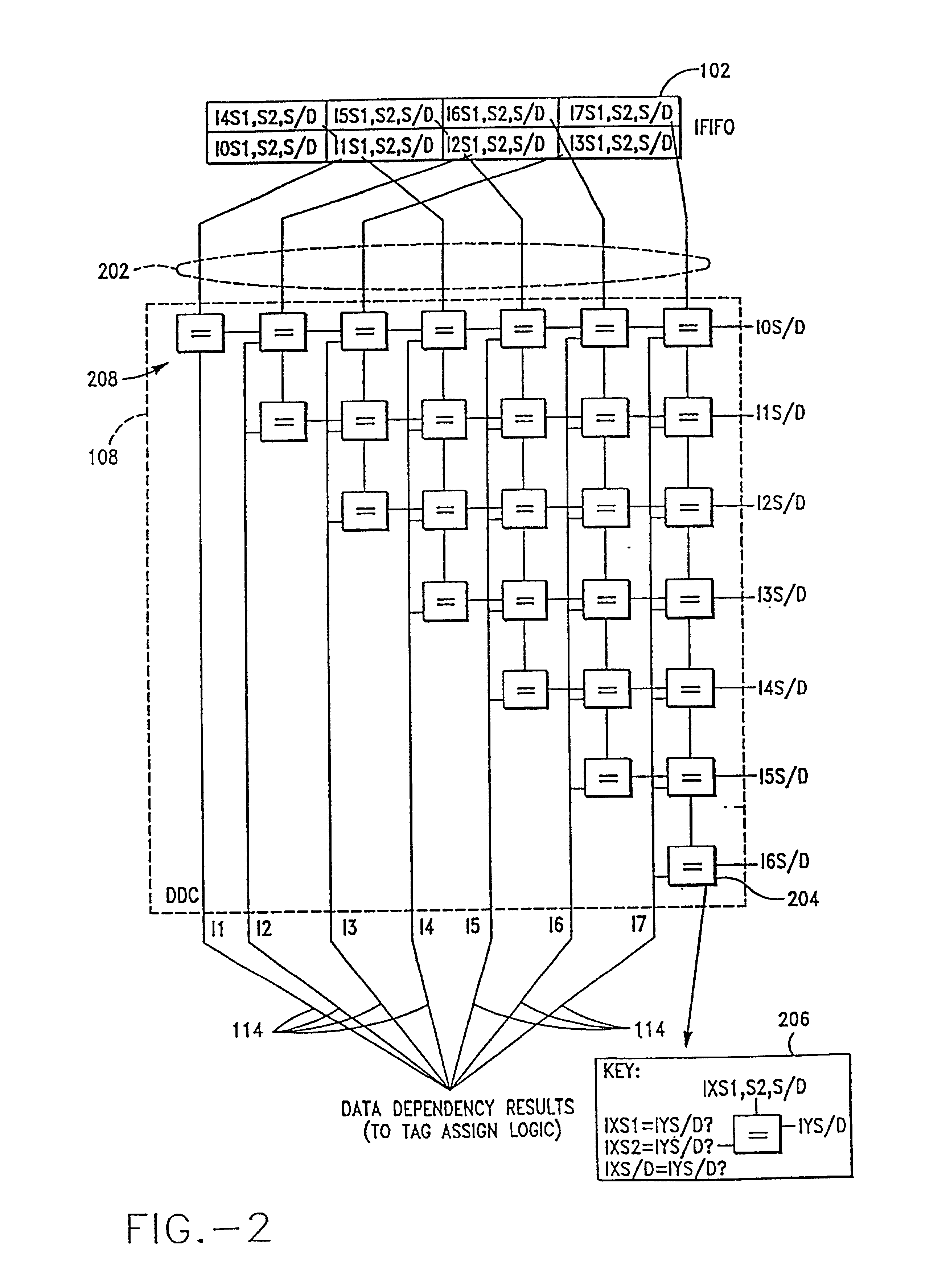Superscalar RISC instruction scheduling
a technology of instruction scheduling and superscalar, applied in the direction of program control, register arrangement, instruments, etc., can solve the problems of reducing performance, reducing performance, and reducing instruction scheduling, so as to save chip area/cost and execution speed
- Summary
- Abstract
- Description
- Claims
- Application Information
AI Technical Summary
Benefits of technology
Problems solved by technology
Method used
Image
Examples
Embodiment Construction
[0054]FIG. 1 shows a representative high level block diagram of an Instruction Execution Unit (IEU) 100 associated with the present invention. The goal of IEU 100 is to execute as many instructions as possible in the shortest amount of time. There are two basic ways to accomplish this: optimize IEU 100 so that each instruction takes as little time as possible or optimize IEU 100 so that it can execute several instructions at the same time.
[0055]Instructions are sent to IEU 100 from an Instruction Fetch Unit (IFU, not shown) through an instruction FIFO (first-in-first-out register stack storage device) 101 in groups of four called “buckets.” IEU 100 can decode and schedule up to two buckets of instructions at one time. FIFO 101 stores 16 total instructions in four buckets labeled 0-3. IEU 100 looks at an instruction window 102. In one embodiment of the present invention, window 102 comprises eight instructions (buckets 0 and 1). Every cycle IEU 100 tries to issue a maximum number of ...
PUM
 Login to View More
Login to View More Abstract
Description
Claims
Application Information
 Login to View More
Login to View More - R&D
- Intellectual Property
- Life Sciences
- Materials
- Tech Scout
- Unparalleled Data Quality
- Higher Quality Content
- 60% Fewer Hallucinations
Browse by: Latest US Patents, China's latest patents, Technical Efficacy Thesaurus, Application Domain, Technology Topic, Popular Technical Reports.
© 2025 PatSnap. All rights reserved.Legal|Privacy policy|Modern Slavery Act Transparency Statement|Sitemap|About US| Contact US: help@patsnap.com



